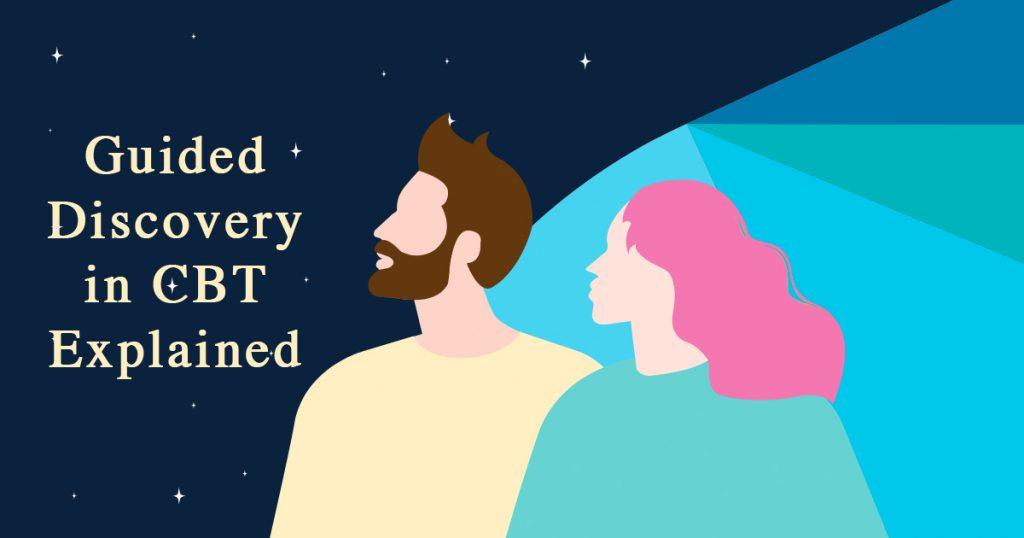Learning about new ideas in therapy might seem like a lot at first. But don’t worry, taking some time to grasp the basics can make it easier. So let’s take a closer look at how guided discovery works in CBT.
What is guided discovery in CBT, and how can it help?
Guided discovery is a helpful part of CBT. It’s when a therapist helps you think about how you understand things. They do this by asking questions or talking about how you think. This can open up new ways of thinking, which can help change how you see things and how you act.
When someone starts CBT, they might not realize how their mind works all the time. It’s not that they’re not smart, it’s just that their brain has habits of thinking that they don’t always notice. Some of these habits might have started when they were kids, while others might be because of how they’re feeling right now.
Think of guided discovery like getting your eyes checked. At first, the optician puts a contraption on your head with lots of lenses. It might make everything look blurry. But then, they start changing the lenses one by one. You tell them what looks better or worse, and they adjust. Eventually, you start seeing things clearly. It’s like trying different glasses until you find the perfect pair.
The guided discovery approach in CBT is just like trying on different glasses for your mind. Instead of using optical lenses, the therapist helps you see things in new ways. This opens up choices in your life and changes how you react to things emotionally. Doing this often helps prevent going back to old ways of thinking, making it less likely to slip back into old habits.
What is the process of guided discovery?
Guided discovery in CBT is like Socratic questioning, but it’s a bit different. Instead of aiming for specific answers, it’s more about exploring together. Here’s how it works:
- Start by asking the client questions about their problems to gather information.
- Then, go over what you learned together.
- Finally, use the insights to look at the original problem in a new way.
The goal is to raise awareness and work together to find insights, rather than just giving answers. This makes the information more useful and engaging for the client.
Why is the guided discovery approach used in CBT?
Guided discovery, used by cognitive therapists, is a team effort to help clients see their problems differently. By working together, it builds a good relationship and helps clients focus on both the problem and the solution. Guided discovery in CBT is a helpful way for clients to think about their problems. But it only works if the therapist truly cares about understanding the client’s perspective.
Application of Guided Discovery for Depression
Guided discovery is really helpful for challenging negative thoughts, especially in depression. People with depression often think very negatively, but guided discovery can help change those thoughts.
Negative thoughts come from past experiences, but they’re not set in stone. Being aware of different facts or situations can challenge those negative beliefs.
A good idea is to write down these negative thoughts and then pretend to be your own therapist. You can have a guided discovery conversation with yourself at home.
When you write down those thoughts, it helps you see them more clearly. Guided discovery isn’t just for therapy—it can be useful outside of sessions too. Writing it down helps you analyze and understand those thoughts better.
Is guided discovery right for you?
Now that you’ve learned about guided discovery, think about whether it might be the right therapy for you. You can learn more about CBT to help decide. Remember, there’s no right or wrong way to seek help. If one method doesn’t work, there are plenty of other options to explore.
Considering Guided Discovery in CBT
If you’re struggling with negative thoughts or feeling overwhelmed, consider exploring guided discovery in CBT. Take a moment to reflect on how this approach might help you see things differently and consider if it’s the right fit for your needs. Remember, seeking help is a brave step, and there are many paths to explore on your journey towards better mental health.
